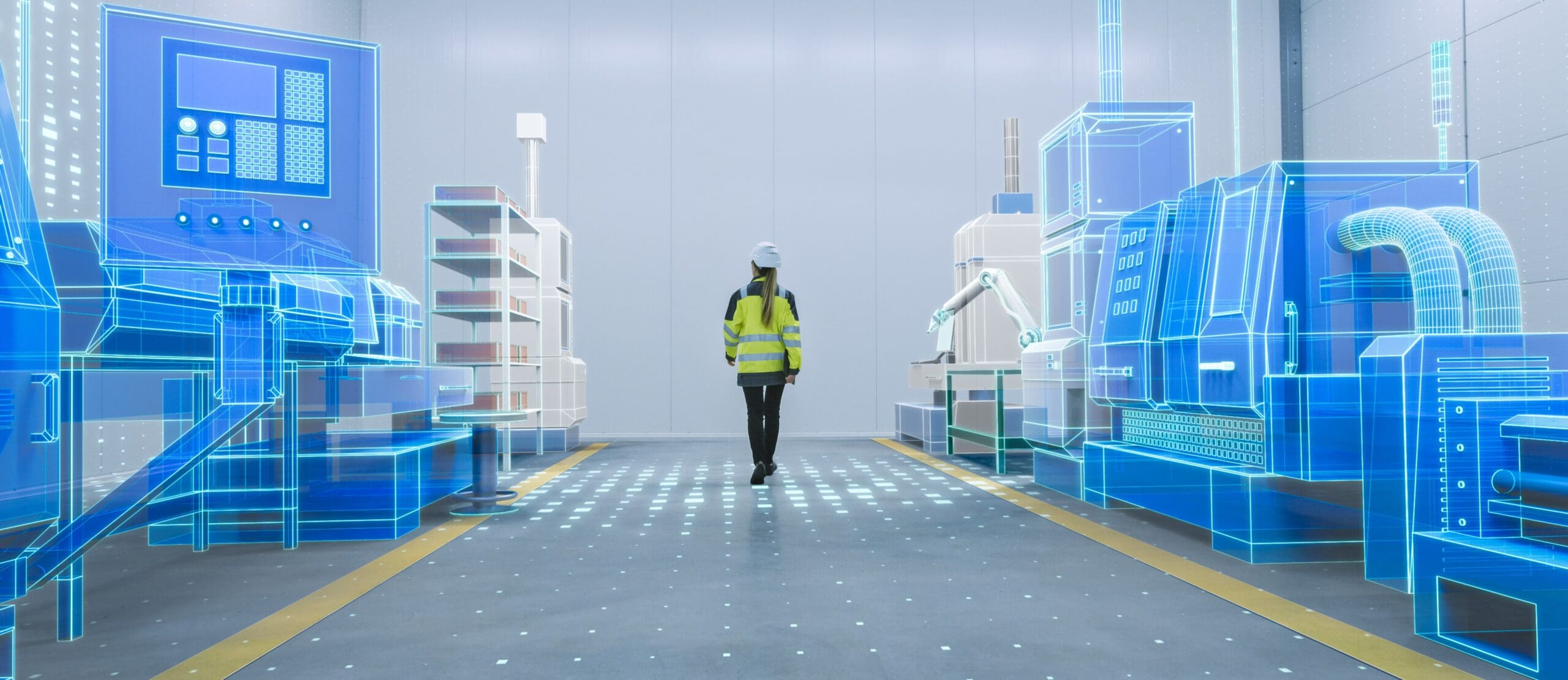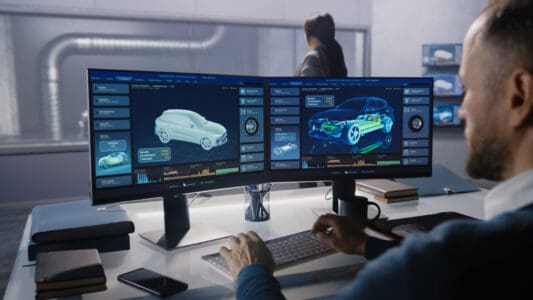How 3D Scanning Is Used in the Manufacturing Industry

With the frequent advancements in 3D scanning technology, manufacturing processes are being streamlined faster than ever before.
By capturing the precise dimensions and surface data of physical objects and converting them into accurate, real-world digital representations, 3D scanning allows manufacturers to accelerate production times and increase output.
Once 3D data is scanned, it can be used for many applications, from prototype creation to quality control analysis.
In the following sections, we’ll dive deeper into the mechanics and applications of 3D scanning, demonstrating and exploring how this technology has become an essential tool for manufacturers worldwide.
How 3D Laser Scanning Works
As its name suggests, 3D laser scanning technology uses a high-powered laser to collect data about an object or scanned environment. The laser beam emits a ray of light that bounces off the surface of an object and returns it to a sensor, where it’s captured.
By repeating this process in multiple iterative scans from many angles, the scanner can build up a 3D point cloud of data about the object being scanned. A point cloud is often made up of millions of individual points, each having its set of 3D coordinates in three-dimensional space.
After a point cloud has been collected, these points are then processed into a digital model of the object that accurately represents its shape and geometry.
Using 3D Scanning for Quality Control in Manufacturing
One of the most common uses of 3D scanning in manufacturing is quality control and inspection. By using a 3D scanner to create a digital model of a part or assembly, manufacturers can perform quality control checks to ensure it meets design specifications by comparing it to the original CAD/digital model.

This is far more desirable than traditional methods of QA/QC involving cumbersome hand measurements and inspections. Rather than manually measuring every dimension of a part or assembly, manufacturers can now automatically compare 3D part scans to their digital models and perform analyses on the fly.
When 3D scanning capabilities are built directly into a manufacturing assembly or production line, quality inspections are more accurate, reliable, and significantly faster.
This ultimately means that manufacturers can minimize the time and resources required to inspect large volumes of products without sacrificing quality or accuracy in the process.
Reverse Engineering With 3D Scanning
Reverse engineering is the process of taking an existing part or assembly and breaking it down into how it was manufactured and designed, thereby “reversing” the production and assembly processes. This is usually done to create a replacement component, improve and iterate upon an existing design, or simply understand how a certain product works “under the hood.”
3D scanners can significantly simplify the reverse engineering process since they allow engineers to quickly capture and digitize the physical structure of any part or assembly, no matter how simple or complex its geometry is. This information can then be used to create a CAD model of the object, which can be iterated upon and improved as needed.
Without 3D scanning, reverse engineering would be a time-consuming and laborious process, undoubtedly involving copious amounts of manual measurements and trial and error.
By incorporating 3D scanning into a reverse engineering workflow, manufacturers can significantly reduce the time and resources required to bring new products to market and innovate on existing designs.
Have Questions About 3D Scanning? Contact DSI
3D scanning has proved itself as an invaluable tool in the manufacturing industry, revolutionizing large portions of the production process.
If you’re interested in incorporating 3D scanning technology into your business, DSI can help.
Founded in 1983, we’re an industry-leading engineering and consulting firm offering a wide range of capabilities, including 3D scanning services. Our experts can use 3D scanning technology to help you find a comprehensive solution for product creation, reverse engineering, facility layout designs, and more.
Please contact us today to schedule a consultation with one of our experts and explore the tremendous potential 3D scanning offers.